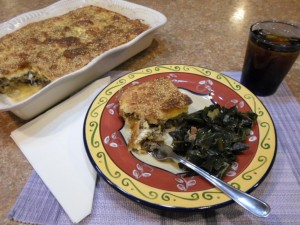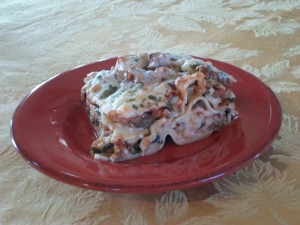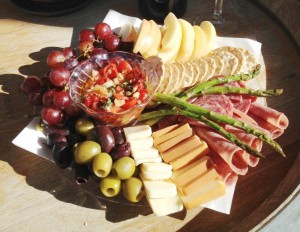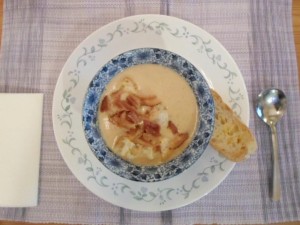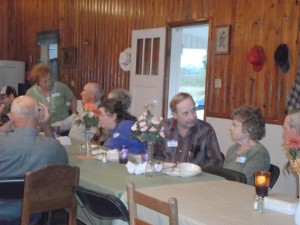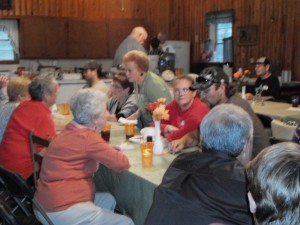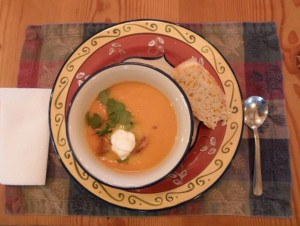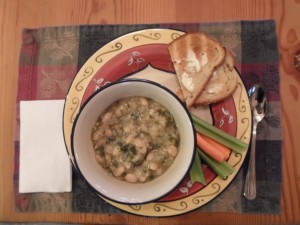Following the theme of a Mediterranean-style Thanksgiving Dinner, I wanted to serve another dish to compliment the lasagna and decided on borek (pronounced burick). Borek is a Turkish (the “Turkey” in our Thanksgiving Dinner) savory pie. I did a little research and some borek versions are made with meat and others with vegetables and cheese. I decided to combine them all and tested the recipe on the boys.
The pastry crust is usually made with yufka dough. According to the Internet, phyllo dough is very similar – so it must be true. I set both logs of frozen rolled dough on the countertop to thaw for at least two hours.
Brown 3 lbs. of ground meat in a large pot. While the meat cooks, chop 2 onions, 4 green peppers, 3 carrots, 3 celery ribs and 3 cloves of garlic. Drain the meat on paper towels and discard most of the grease in the pot. Using the same pot, sauté all the vegetables and add salt and pepper.
Add the meat back and add 1 tsp. each of crushed fennel, coriander and celery seeds, 2 tsp. ground cumin, 1⁄2 cup chopped fresh parsley and 2 cups red wine. Let all simmer on low for at least 20 minutes – taste and season as necessary. Meanwhile, shred 1 lb. Monterrey jack cheese, spray a 9×13″ baking pan and preheat the oven to 400 degrees.
Prepare the egg-wash by whisking 5 eggs, 1 cup milk and 3⁄4 cup vegetable oil. I found it easiest to lay each thin piece of dough directly into the greased baking pan. The dough sheets will overlap each other as well as hang over the sides of the pan. Be sure to brush egg-wash liberally before adding overlapping layers.
Phyllo dough is tricky to work with, so make sure you don’t have dogs, kids or husbands underfoot when trying to complete this task. I ended up laying four sheets of dough across the bottom of the pan to form one layer and then added five similar layers, brushing liberally with the egg-wash.
Spoon half the vegetable-meat mixture onto the layered dough. Then add dollops of small-curd cottage cheese and half the shredded Monterrey jack. Take the dough that was allowed to hang over the sides of the pan and fold into the dish. Begin laying additional sheets of phyllo dough on top, allowing some to hang over the edges of the pan. I overlapped three sheets and made 6 layers – always using egg-wash between sheets.
Spread on the rest of the vegetable-meat mixture, cottage cheese and shredded cheese. Fold in the overlapping dough and finish the top of the dish with 6 more layers of overlapping egg-washed phyllo-dough sheets. Pour any remaining egg-wash over the top. Then sprinkle celery seeds, paprika, cumin, freshly ground black pepper and sesame seeds as the final topping. Whew! Bake for 10 minutes, then cover with foil and bake for another 35 minutes. Let the borek rest for 20 minutes before cutting and serving.
My son brought home collard greens from one of his customers at work and I cooked them with bacon, onions and garlic for a side dish. The borek, greens and a glass of mint tea made a very fine meal. I’ll probably tweak this dish a little more, but it will be a nice addition to a Mediterranean Thanksgiving Dinner.

